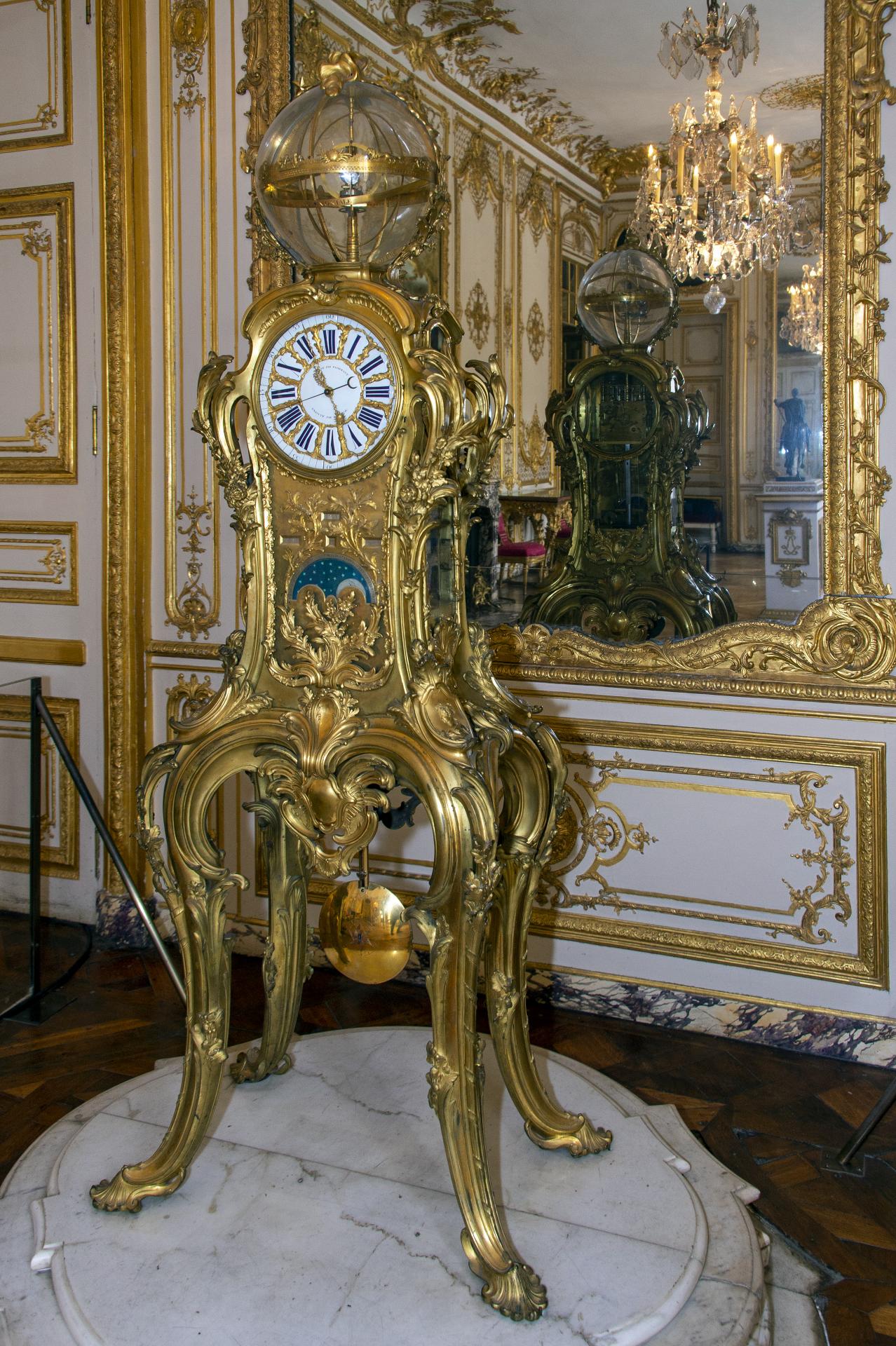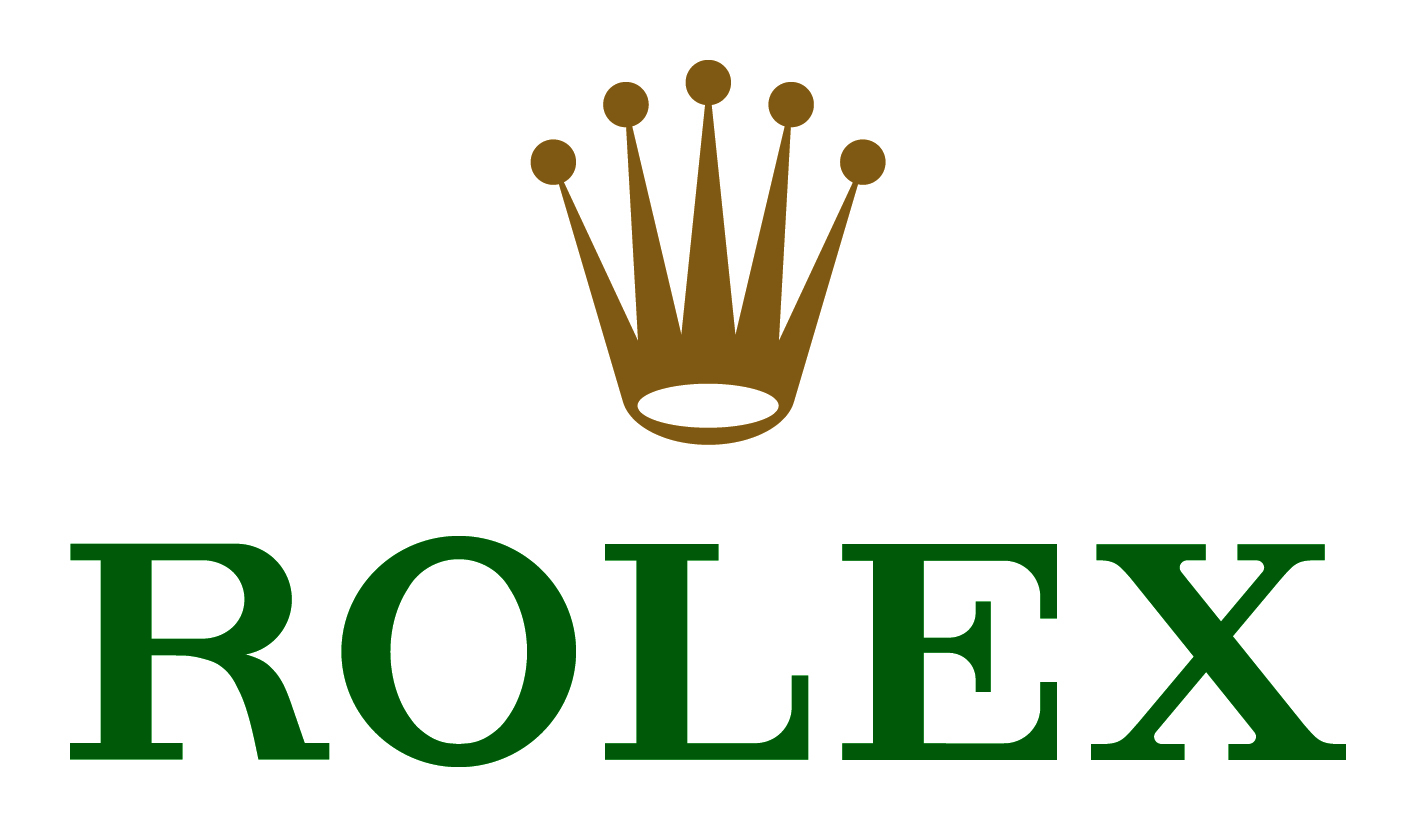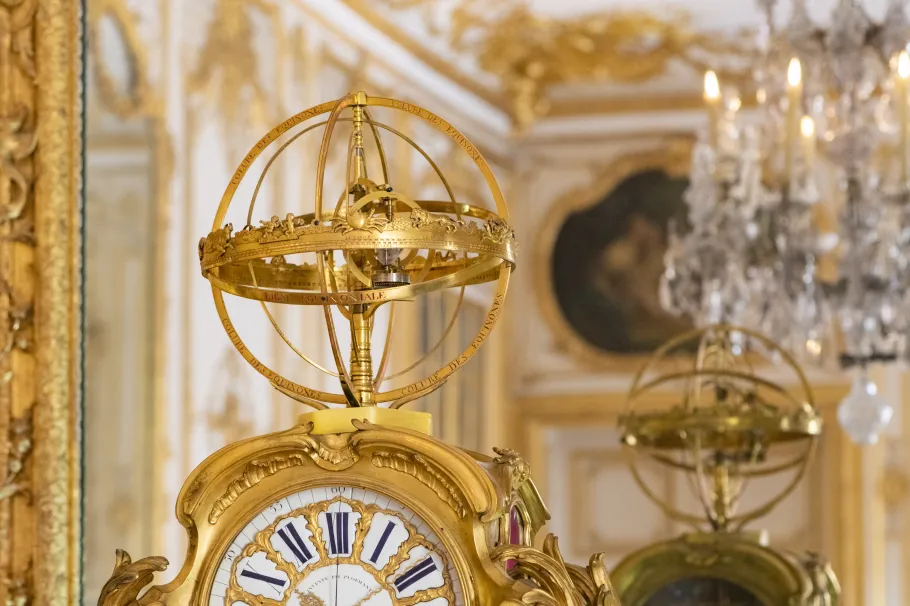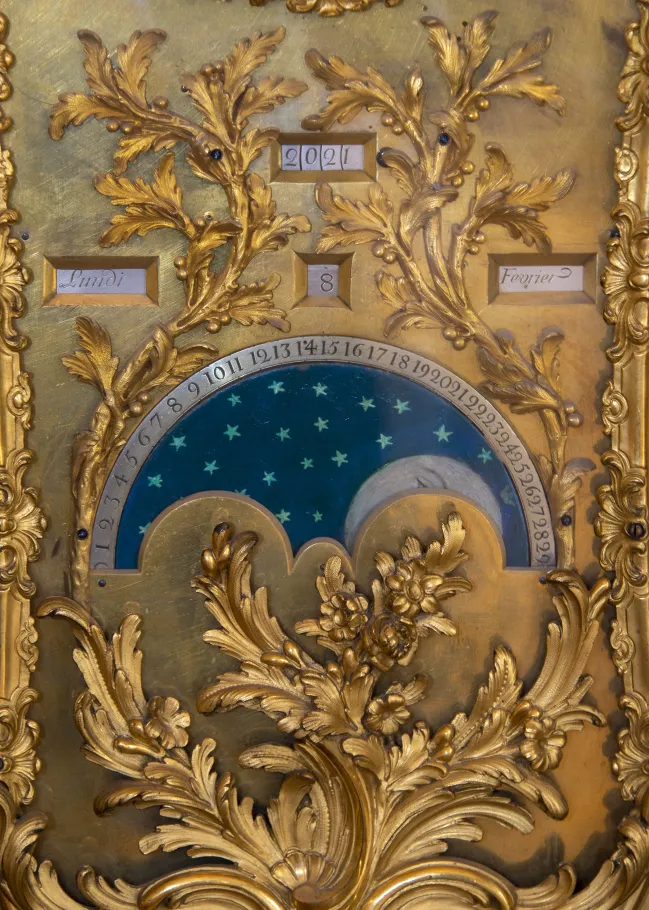An icon of the Palace’s collections, Claude-Siméon Passemant’s astronomical clock, the grandest created under Louis XV’s reign, is a veritable artistic and scientific achievement. In 2022 and 2023, it will undergo an exceptional and total restoration, and will be presented anew as part of the Louis XV exhibit at the Palace.

The restoration of Claude-Siméon Passemant’s astronomical clock
A one-of-a-kind restoration
On January 15, 1754, the clock was installed at Versailles on a white marble pedestal in the King’s Bedchamber, in the adjoining corner room, which was thenceforth known as the Clock Room.

Passemant’s astronomical clock on its white marble pedestal
© EPV / Didier Saulnier
This remarkable object simultaneously displays: celestial time, in an armillary sphere on top; the hour, on an enameled porcelain clockface with four hands; the date, via a mechanism that automatically accounts for monthly changes while the 29 lunar decans cycle over a background of stars. During eclipses, a silver cover appears, indicating whether the eclipse is total or partial.
Thirty-six years of labor went into this exemplar of technical prowess. Passemant devoted 20 years to the design of the astronomical tables and the machinery, whose creation required 12 years of work from the clockmaker Dauthiau. Jacques Caffieri needed four more years to fabricate the gilded-bronze case, a masterpiece of rococo art. The clock received to approval of the Royal Academy of Sciences.
In 2022 and 2023, the restoration of Passemant’s clock began, at the C2RMF including the bronze case - a masterwork of rococo art- as well as its horological and astronomical mechanism, which has not received maintenance since 1954. Its exceptional mechanism, noted for its complexity, is currently so clogged that not only do several aspects no longer function, but that, due to overuse, its central motor movement fails to work consistently. Finally, the mix of used and corroded oils mixed with dust create an abrasive mass that damages the steel and causes the progressive deterioration of the clock’s functioning.
In March 2025, Passemant's clock was once again moved to begin the second phase of its restoration, dedicated to its clockwork and astronomical mechanism.
In the course of its restoration, the clock will feature in the opening of the in-depth exhibit on Louis XV, organized from mid-October 2022 to February 2023 at the Palace of Versailles. It will then be calibrated, re-set and re-installed in its original room as of September 2023.
PATRONAGE
The sponsor behind the restoration of the King’s Private Chamber in 2018-2020, Rolex France is renewing its support of the Palace of Versailles by supporting the restoration of the Passemant astronomical clock.
Perpetuating culture
Rolex is an integrated and independent Swiss watch manufacture. Headquartered in Geneva, the brand is recognized the world over for its expertise and the quality of its products – symbols of excellence, elegance and prestige. This never-ending quest for excellence emerged from its unwavering commitment to longevity, beauty, and creativity.
This philosophy is evident in its longstanding commitment to supporting the arts and culture through partnerships with artists, cultural institutions, and outstanding performances. This is why Rolex has worked to preserve culture for over 40 years. Whether in architecture, cinema, literature, music, or other forms of creativity, Rolex is moving quietly in the background.
The word “Perpetual” is inscribed on every Rolex Oyster watch. But more than just a word on a dial, it is a philosophy that embodies the company’s vision and values. Hans Wilsdorf, the founder of the company, instilled a notion of perpetual excellence that would drive the company forward. Inspired by its watches that are built to last, Rolex is committed in the long-term for the sake of future generations.
Animated by the calling to contribute to the preservation and transmission of a unique cultural heritage carved into history, Rolex France, patron of the restoration of the King’s Private Chamber, is more than pleased to provide another act of patronage to the Palace of Versailles for the restoration of the Passemant astronomical clock.








